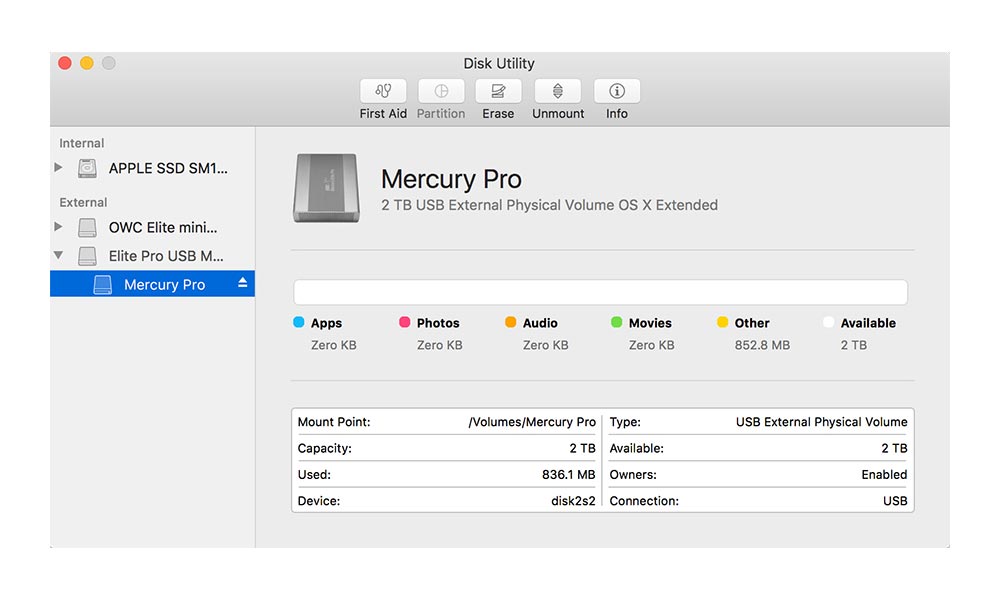- It was running on a normal 750G HDD, but i wanted an upgrade, so i bought the Samsung V-Nand 850 EVO SSD 1TB. I created a Bootable El-Capitan USB Stick, so i could do a clean install. After i swapped the HDD with the Samsung SSD, i plugged in my Bootable USB stick and turned on my macbook. First it shows the apple logo with a loading line.
- Install OS X El Capitan (or macOS Sierra). (HDD) or Solid State Drive (SSD). That way, you can always mount that external drive, access and copy over individual files. Make a fresh set of.
I am using Macbook Pro Mid 2012 13' with 128GB SSD. The latest installed version of OS X was El Capitan which crashed during a Sierra upgrade.
Open the disk image, then open the.pkg installer inside the disk image. It installs an app named Install Version Name. Open that app from your Applications folder to begin installing the operating system. MacOS Sierra 10.12 can upgrade El Capitan, Yosemite, Mavericks, Mountain Lion, or Lion. 1) First of all, open Disk Utility on a Mac. 2) Then, select the SSD disk icon and move to the Erase tab. 3) Pick a name and decide on the preferred format or leave the default values – OS X Extended (Journaled) and Partition map. 4) Visit the AppStore to download OS X El Capitan package for installation. Once you’ve done that, here’s how to install, reinstall, or upgrade to El Capitan, step by step: Boot from your Recovery HD partition by restarting your Mac while holding down the Command+R keys. The OS X Utilities window appears. Select Reinstall OS X, and click Continue. The OS X El Capitan splash screen appears.
Internet recovery mode worked somehow to land me to install download and install a new OS but it's Mountain Lion, which came installed when I bought the Macbook few years back However, it's rejecting to install on current SSD drive as shown in pic.
I have another 320GB HDD, so is this the only way to reinstall? First I do a fresh install of Lion on the external HDD? What I should I do?
What is a step by step procedure as all I want to do is run OSX on SSD drive but keeping all my older data. I can not afford to wipe it.
However, I did back up some of its backup onto my PC. If I install Lion the HDD can I then download Sierra and create an install disk to update/fix/install corrupted OS X on SSD?
Start up from macOS Recovery
Determine whether you're using a Mac with Apple silicon, then follow the appropriate steps:
Apple silicon
Turn on your Mac and continue to press and hold the power button until you see the startup options window. Click the gear icon labeled Options, then click Continue.
Intel processor

Make sure that your Mac has a connection to the internet. Then turn on your Mac and immediately press and hold Command (⌘)-R until you see an Apple logo or other image.
If you're asked to select a user you know the password for, select the user, click Next, then enter their administrator password.
Reinstall macOS
Select Reinstall macOS from the utilities window in macOS Recovery, then click Continue and follow the onscreen instructions.

Follow these guidelines during installation:
- If the installer asks to unlock your disk, enter the password you use to log in to your Mac.
- If the installer doesn't see your disk, or it says that it can't install on your computer or volume, you might need to erase your disk first.
- If the installer offers you the choice between installing on Macintosh HD or Macintosh HD - Data, choose Macintosh HD.
- Allow installation to complete without putting your Mac to sleep or closing its lid. Your Mac might restart and show a progress bar several times, and the screen might be empty for minutes at a time.
After installation is complete, your Mac might restart to a setup assistant. If you're selling, trading in, or giving away your Mac, press Command-Q to quit the assistant without completing setup. Then click Shut Down. When the new owner starts up the Mac, they can use their own information to complete setup.
Other macOS installation options
How To Install El Capitan On New Ssd Hard Drive

When you install macOS from Recovery, you get the current version of the most recently installed macOS, with some exceptions:
Make El Capitan Install Usb
- On an Intel-based Mac: If you use Shift-Option-Command-R during startup, you're offered the macOS that came with your Mac, or the closest version still available. If you use Option-Command-R during startup, in most cases you're offered the latest macOS that is compatible with your Mac. Otherwise you're offered the macOS that came with your Mac, or the closest version still available.
- If the Mac logic board was just replaced, you may be offered only the latest macOS that is compatible with your Mac. If you just erased your entire startup disk, you may be offered only the macOS that came with your Mac, or the closest version still available.
Install El Capitan On New Ssd Mac
You can also use these methods to install macOS, if the macOS is compatible with your Mac:
How To Install El Capitan On A New Ssd
- Use the App Store to download and install the latest macOS.
- Use the App Store or a web browser to download and install an earlier macOS.
- Use a USB flash drive or other secondary volume to create a bootable installer.